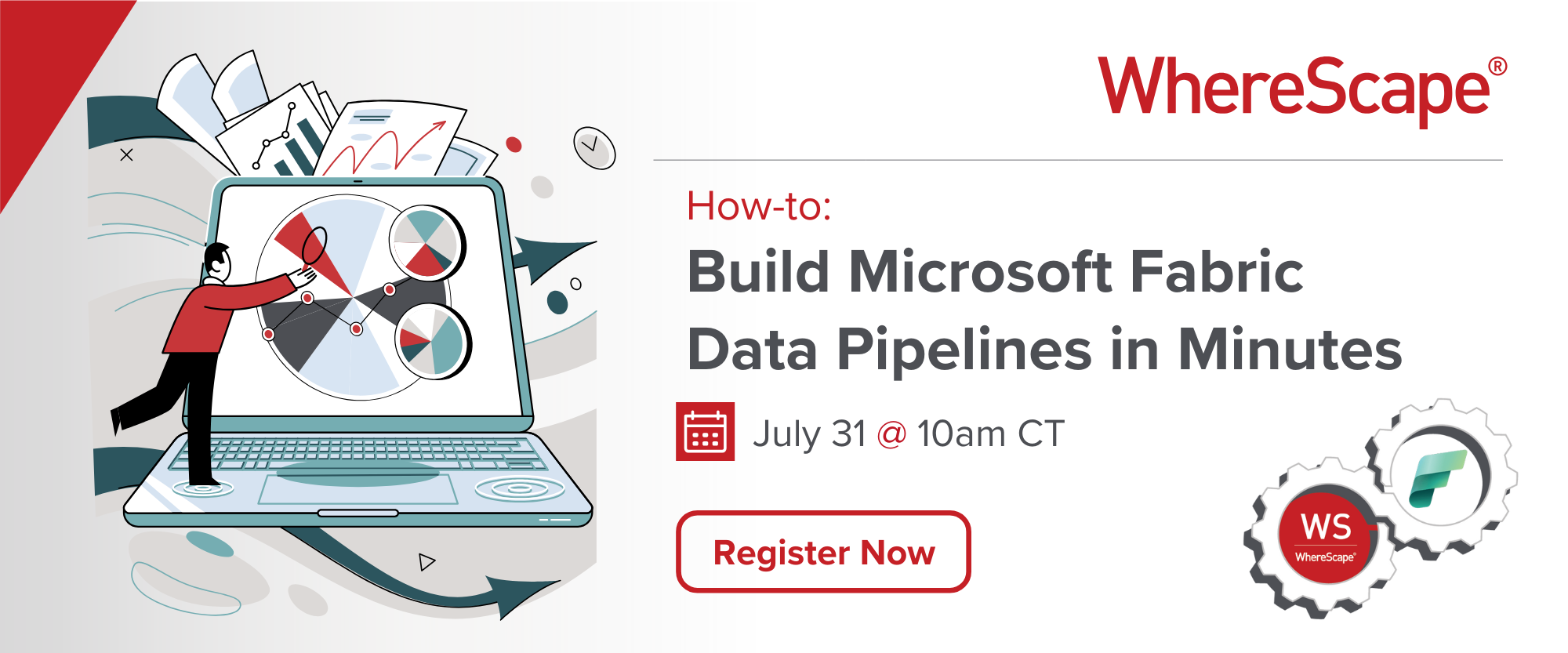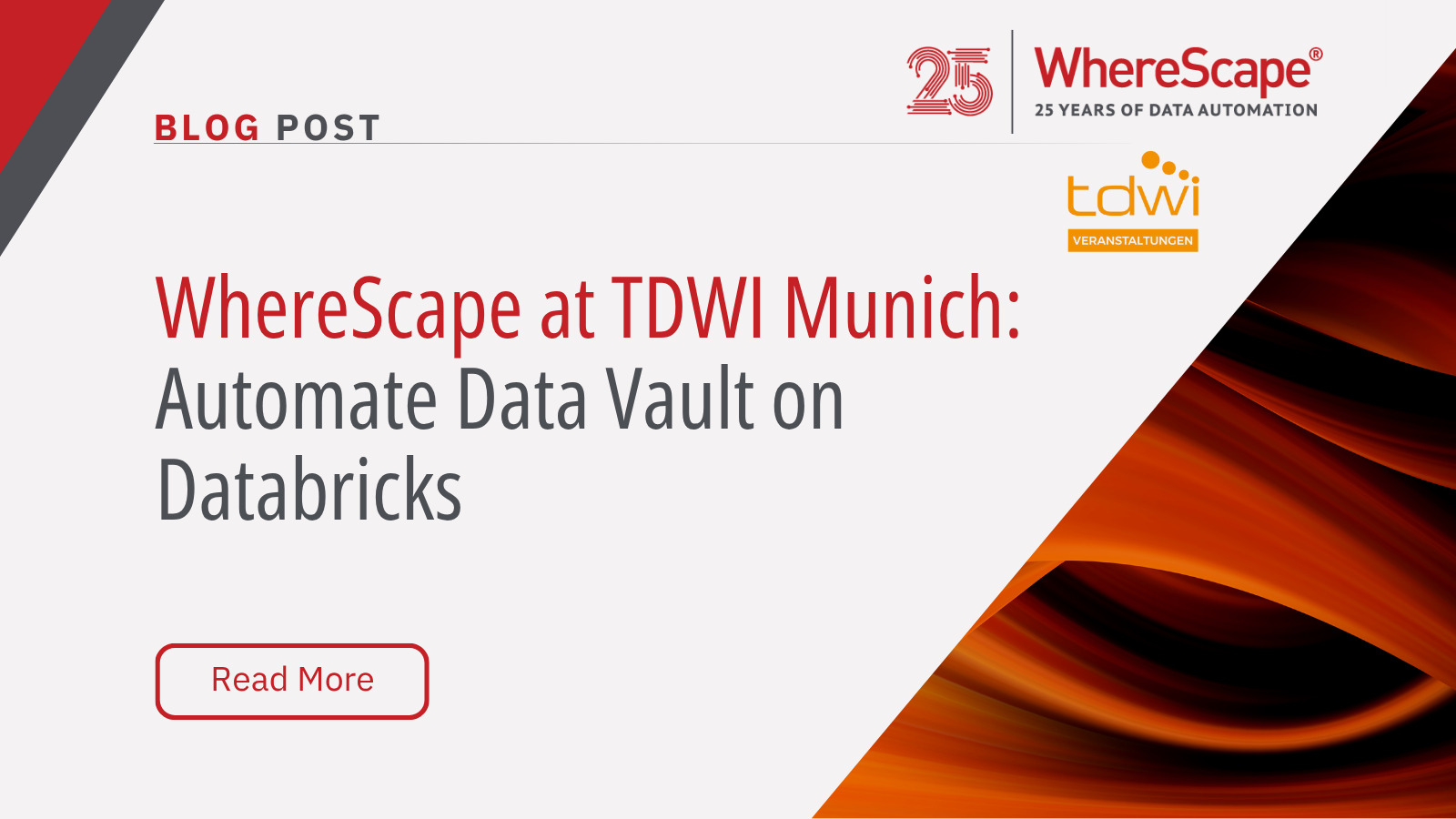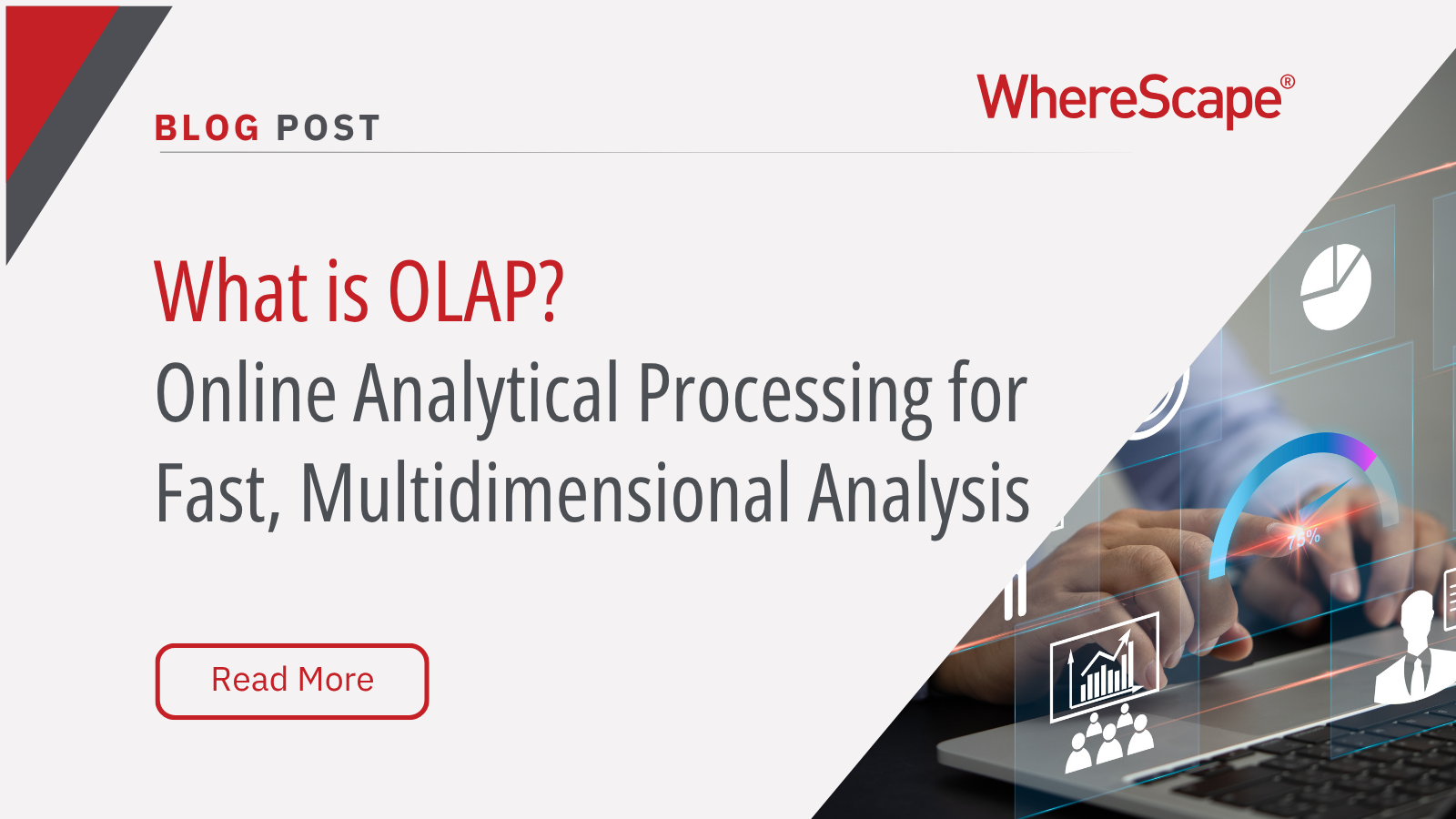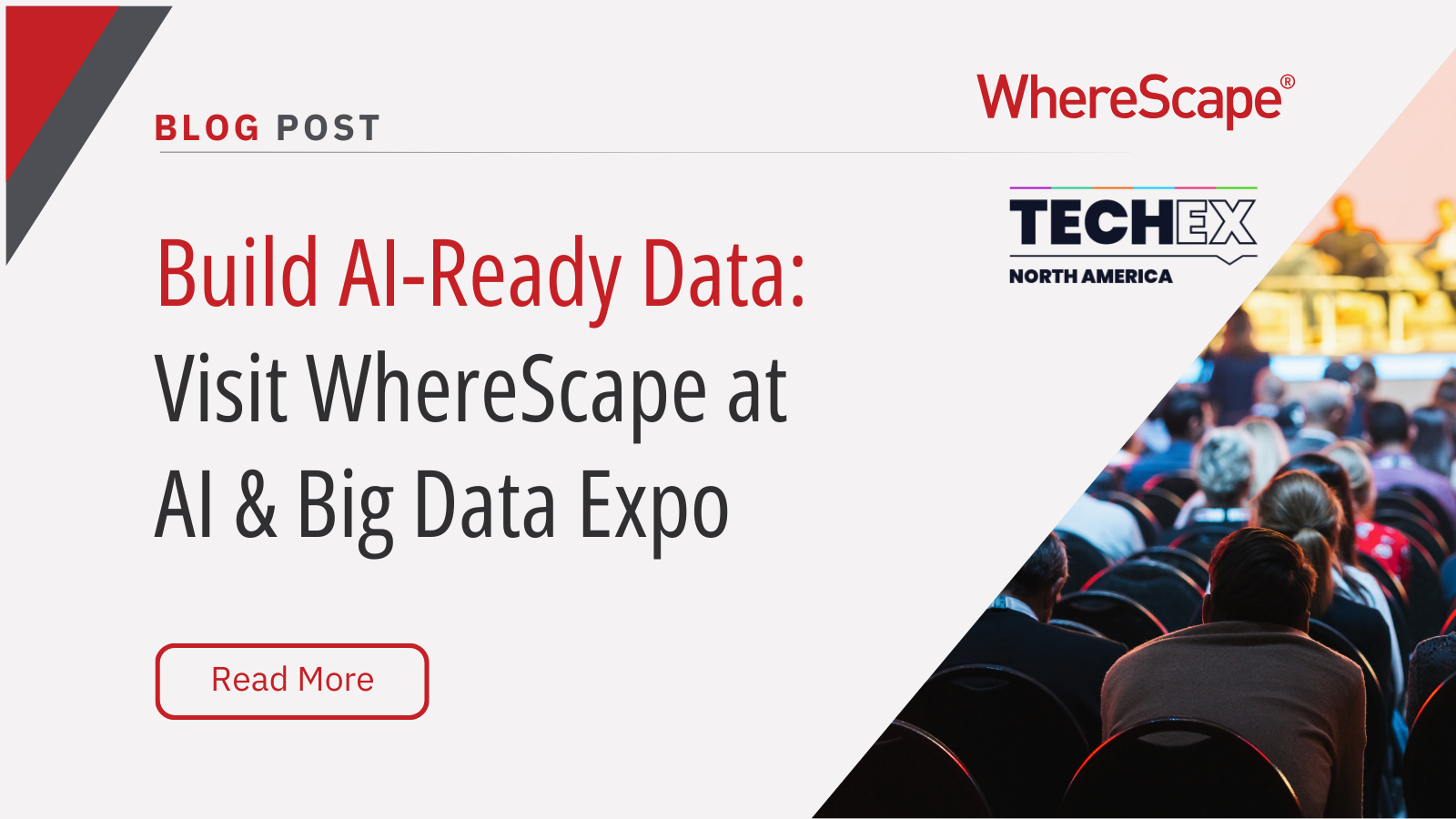Join our fast-and-friendly virtual tour to...
Data Mesh and Data Fabric: Changing the Game in Data Product Development
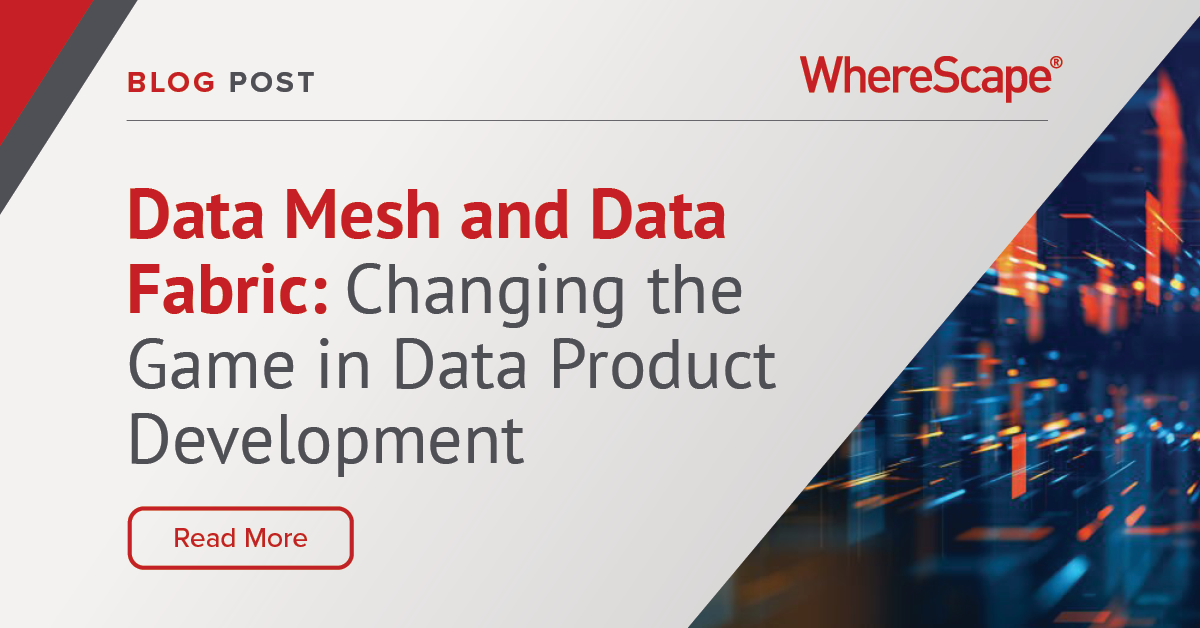
Data Mesh vs Data Fabric
Data Mesh and Data Fabric are reshaping how organizations approach data product development. In an era where data-driven decisions are central to business success, these innovative paradigms are becoming increasingly crucial. By enabling organizations to transform information into actionable insights, they offer a new perspective on handling data.
Data Mesh and Data Fabric Characteristics
- Data Mesh emphasizes decentralized ownership and scalable infrastructure, improving data agility and collaboration. It allows data to be owned and managed by user teams instead of a central unit, fostering more responsiveness. WhereScape products seamlessly align with these principles, aiding in flexible data management.
- Data Fabric is about seamless integration and automation, enhancing data quality and consistency. It makes finding and using data across sources more accessible, and WhereScape’s solutions are designed to support these functionalities.
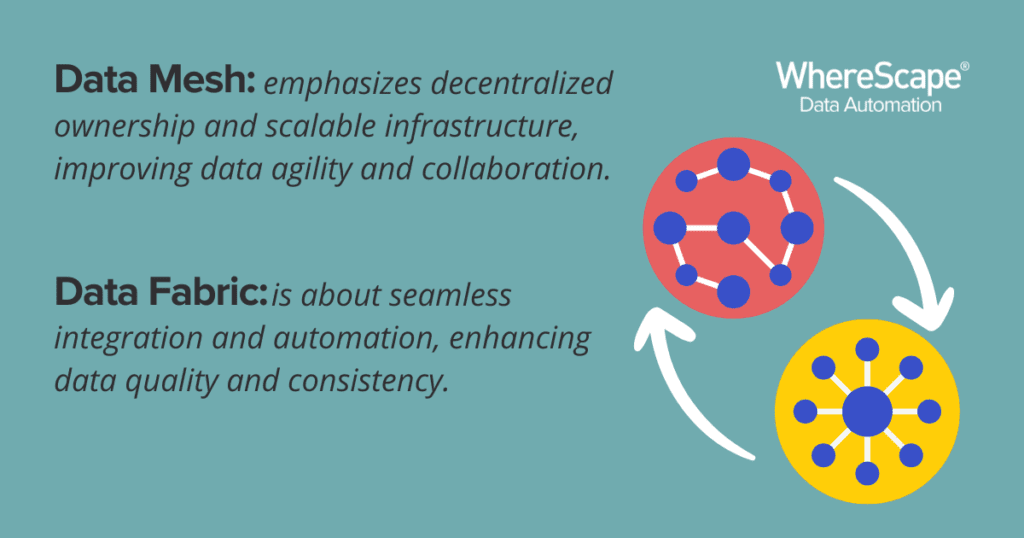
Data Mesh and Data Fabric for Data Development
Data Mesh and Data Fabric transform data product development, accelerate data access, and improve flexibility. WhereScape products enable organizations to:
- Develop data products more quickly.
- Respond rapidly to changing data needs.
- Foster collaboration between teams
- Break down data silos.
Data Mesh and Data Fabric Advantages
Adopting these paradigms with WhereScape’s support offers advantages like:
- Streamlined workflows
- Improved decision-making
- Enhanced adaptability
- Cross-team collaboration
However, challenges such as complexity in implementation or risk of inconsistencies should be considered. WhereScape’s comprehensive solutions are designed to mitigate these concerns.
Data Mesh and Data Fabric Considerations
When considering Data Mesh and Data Fabric, think about:
- Organizational culture
- Size and complexity
- Budget constraints
WhereScape can guide organizations through these considerations, ensuring a tailored approach to unique needs.
Data Mesh and Data Fabric are powerful tools to improve data product development. With WhereScape’s support, the benefits can be realized while minimizing potential drawbacks.
WhereScape at TDWI Munich: Automate Data Vault on Databricks
WhereScape at TDWI Munich 2025: Automate a Full Data Vault on Databricks in Just 45 Minutes June 24–26, 2025 | MOC Munich, Germany As data complexity grows and business demands accelerate, scalable and governed data architectures are no longer optional—they're...
What Is OLAP? Online Analytical Processing for Fast, Multidimensional Analysis
Streamline your data analysis process with OLAP for better business intelligence. Explore the advantages of Online Analytical Processing (OLAP) now! Do you find it challenging to analyze large volumes of data swiftly? A Forrester study reveals that data teams spend...
Build AI-Ready Data: Visit WhereScape at AI & Big Data Expo
June 4–5, 2025 | Booth 202 | Santa Clara Convention Center As organizations scale their artificial intelligence and analytics capabilities, the demand for timely, accurate, governed, and AI-ready data has become a strategic priority. According to Gartner, through...
Automating Star Schemas in Microsoft Fabric: A Webinar Recap
From Data Discovery to Deployment—All in One Workflow According to Gartner, data professionals dedicate more than half of their time, 56%, to operational tasks, leaving only 22% for strategic work that drives innovation. This imbalance is especially apparent when...
What is a Data Model? How Structured Data Drives AI Success
What is a data model? According to the 2020 State of Data Science report by Anaconda, data scientists spend about 45% of their time on data preparation tasks, including cleaning and loading data. Without well-structured data, even the most advanced AI systems can...
ETL vs ELT: What are the Differences?
In working with hundreds of data teams through WhereScape’s automation platform, we’ve seen this debate evolve as businesses modernize their infrastructure. Each method, ETL vs ELT, offers a unique pathway for transferring raw data into a warehouse, where it can be...
Dimensional Modeling for Machine Learning
Kimball’s dimensional modeling continues to play a critical role in machine learning and data science outcomes, as outlined in the Kimball Group’s 10 Essential Rules of Dimensional Modeling, a framework still widely applied in modern data workflows. In a recent...
Automating Data Vault in Databricks | WhereScape Recap
Automating Data Vault in Databricks can reduce time-to-value by up to 70%—and that’s why we hosted a recent WhereScape webinar to show exactly how. At WhereScape, modern data teams shouldn't have to choose between agility and governance. That's why we hosted a live...
WhereScape Recap: Highlights From Big Data & AI World London 2025
Big Data & AI World London 2025 brought together thousands of data and AI professionals at ExCeL London—and WhereScape was right in the middle of the action. With automation taking center stage across the industry, it was no surprise that our booth and sessions...
Why WhereScape is the Leading Solution for Healthcare Data Automation
Optimizing Healthcare Data Management with Automation Healthcare organizations manage vast amounts of medical data across EHR systems, billing platforms, clinical research, and operational analytics. However, healthcare data integration remains a challenge due to...
Related Content
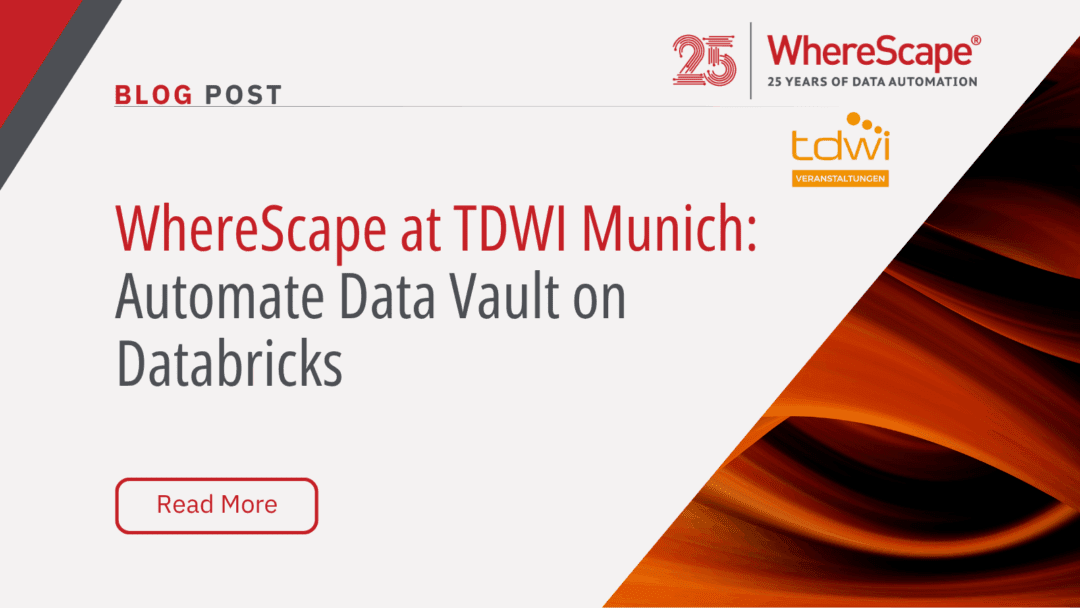
WhereScape at TDWI Munich: Automate Data Vault on Databricks
WhereScape at TDWI Munich 2025: Automate a Full Data Vault on Databricks in Just 45 Minutes June 24–26, 2025 | MOC Munich, Germany As data complexity grows and business demands accelerate, scalable and governed data architectures are no longer optional—they're...
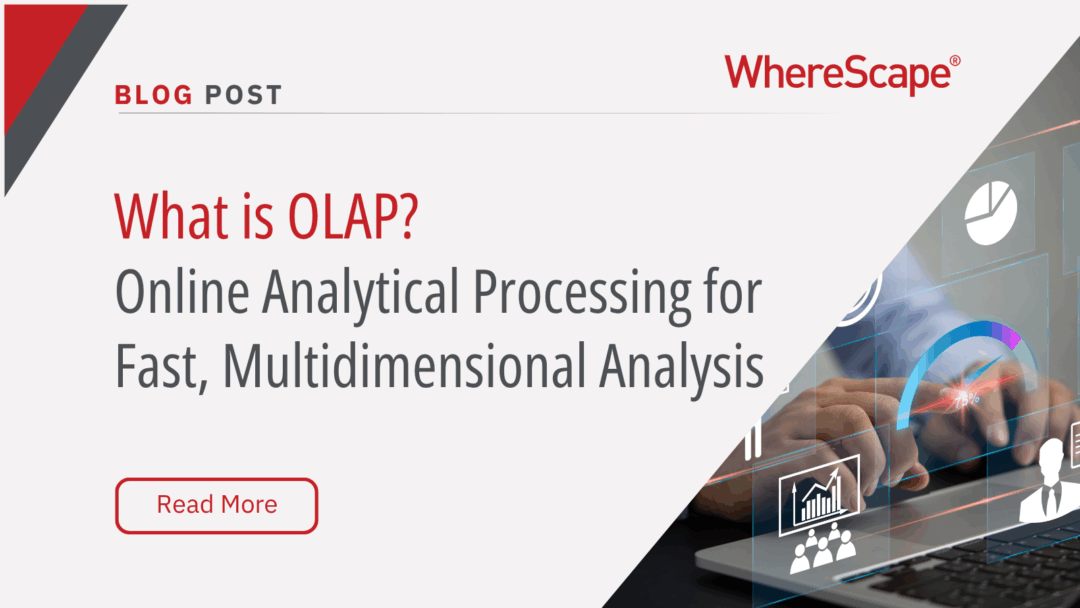
What Is OLAP? Online Analytical Processing for Fast, Multidimensional Analysis
Streamline your data analysis process with OLAP for better business intelligence. Explore the advantages of Online Analytical Processing (OLAP) now! Do you find it challenging to analyze large volumes of data swiftly? A Forrester study reveals that data teams spend...
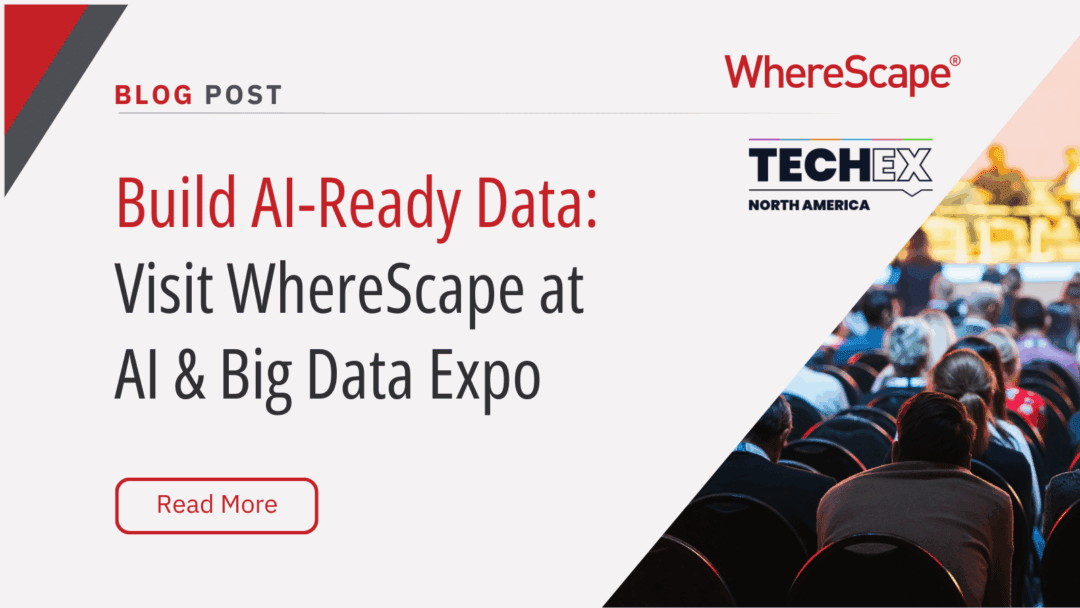
Build AI-Ready Data: Visit WhereScape at AI & Big Data Expo
June 4–5, 2025 | Booth 202 | Santa Clara Convention Center As organizations scale their artificial intelligence and analytics capabilities, the demand for timely, accurate, governed, and AI-ready data has become a strategic priority. According to Gartner, through...
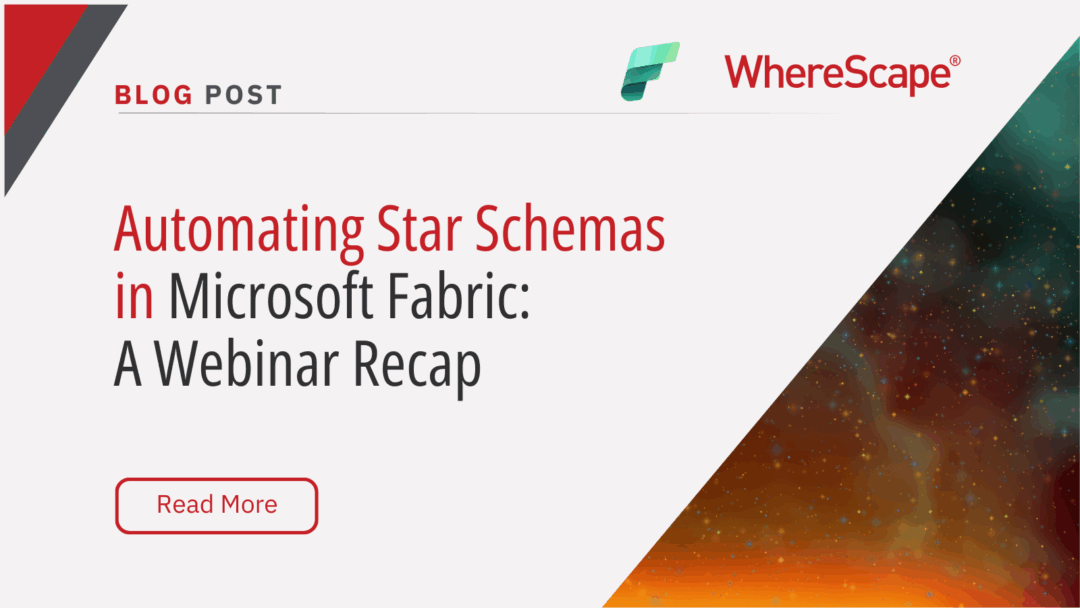
Automating Star Schemas in Microsoft Fabric: A Webinar Recap
From Data Discovery to Deployment—All in One Workflow According to Gartner, data professionals dedicate more than half of their time, 56%, to operational tasks, leaving only 22% for strategic work that drives innovation. This imbalance is especially apparent when...

